Dealing with dragging brakes can be a frustrating and concerning issue for any vehicle owner, compromising both safety and performance. When brakes fail to release fully, it not only leads to excessive wear but also poses a risk of overheating.
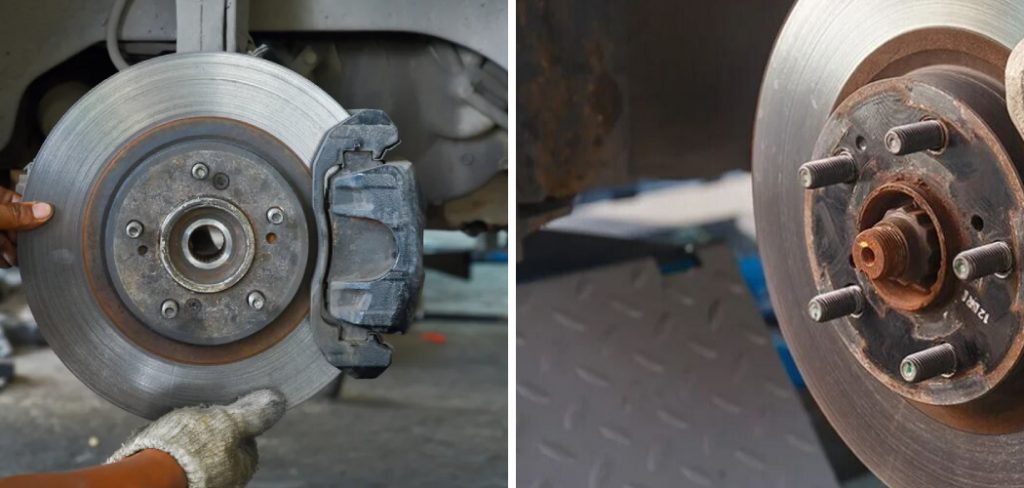
Learning how to fix dragging brakes is a crucial skill for car enthusiasts and DIY mechanics. In this comprehensive guide, we will explore the common causes of dragging brakes, ranging from issues with calipers and brake pads to hydraulic problems.
Armed with troubleshooting techniques and step-by-step solutions, you’ll gain the knowledge needed to identify, diagnose, and rectify dragging brake issues efficiently.
Whether you’re a seasoned DIYer or a novice, understanding the intricacies of resolving dragging brakes ensures a smoother and safer driving experience, emphasizing the importance of regular brake maintenance for overall vehicle health.
Importance of Addressing Dragging Brakes Promptly
Ignoring the signs of dragging brakes not only hampers a vehicle’s operation but can also lead to more severe consequences if left unattended. When the brakes drag, it causes increased friction and higher temperatures, which can diminish braking efficacy and potentially warp brake components.
This deterioration not only necessitates expensive repairs but also compromises the safety of passengers and others on the road. Addressing dragging brakes promptly is vital to maintain the vehicle’s integrity, ensure optimal performance, and guarantee the safety of your driving experience.
By taking immediate action, one can avoid the domino effect of related mechanical issues and ensure that a minor fix doesn’t turn into a major overhaul.
Common Causes of Dragging Brakes
Brake dragging can stem from various mechanical failures or maladjustments. One of the most typical causes is sticking calipers. This can occur when the caliper pistons become seized due to rust or dirt, or when the caliper slides fail to move freely. Another prevalent issue is faulty brake pads, which might not retract fully if they’re worn unevenly or installed improperly.
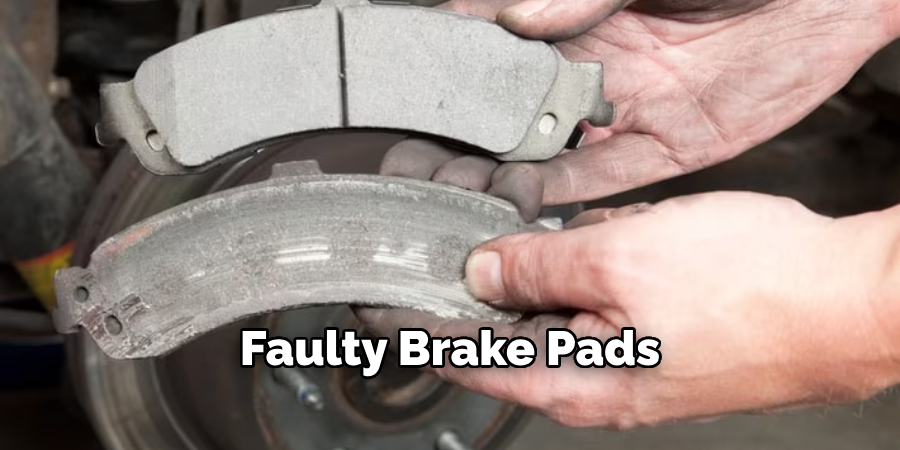
Additionally, hydraulic problems, such as air in the brake lines or a failing master cylinder, can prevent the brake fluid from flowing correctly, leading to brakes that don’t release as they should.
Issues with the brake hose being constricted or the parking brake assembly malfunctioning can also result in brakes that drag. Understanding these causes is the first step in troubleshooting dragging brakes, allowing for a targeted approach in addressing the problem.
Precautions and Safety Measures
Before attempting to fix dragging brakes, it is critically important to prioritize safety and prevent potential injuries. Always ensure that the vehicle is parked on a stable and level surface and that the engine is turned off and keys are removed from the ignition.
Use wheel chocks to secure the vehicle from accidentally rolling. Personal protective equipment such as safety glasses and gloves should be worn to shield against brake dust and any sharp objects.
Additionally, familiarize yourself with the vehicle’s brake system from the manufacturer’s manual to adhere to specific recommendations and torque settings. It’s essential to never rush the diagnostic or repair process; patience and attention to detail can mean the difference between a successful repair and a potentially dangerous oversight.
Remember, if at any point you feel uncertain about the process or the safety measures required, do not hesitate to consult a professional mechanic.
10 Methods How to Fix Dragging Brakes
1. Check Brake Pads
The first step in fixing dragging brakes is to check the brake pads. Over time, brake pads can become worn and may need to be replaced. If the brake pads are too thin, they can cause the brakes to drag.
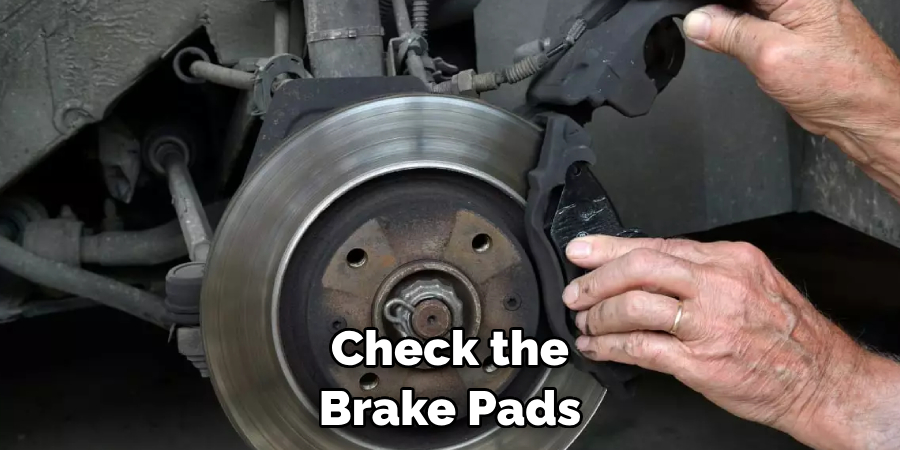
2. Clean and Lubricate Caliper Slides
The caliper slides are responsible for moving the brake pads in and out as you apply and release the brakes. If these slides become dirty or corroded, they can cause the brake pads to stick and result in dragging brakes. Cleaning and lubricating these slides can help prevent this issue.
3. Replace Brake Fluid
Brake fluid is an essential component in your braking system, as it helps to transfer pressure from your foot on the pedal to the brake pads. Over time, brake fluid can become contaminated with moisture or debris, which can cause it to lose its effectiveness and lead to dragging brakes. Replacing old brake fluid with fresh fluid can help improve braking performance.
4. Check for Air in Brake Lines
Air bubbles in your brake lines can also lead to dragging brakes. When air gets into the lines, it can prevent proper pressure from reaching the brake pads, causing them to stick and drag. Bleeding the brakes to remove any air bubbles is a simple fix for this issue.
5. Inspect Brake Rotors
Brake rotors are another crucial component of your braking system that should be inspected regularly for wear or damage. Worn or warped rotors can cause uneven pressure on the brake pads, leading to dragging brakes.
6. Adjust Parking Brake
If your parking brake is not fully disengaging when released, it can cause your brakes to drag while driving. Adjusting or replacing the parking brake cable may be necessary to fix this problem.
7. Check Wheel Bearings
Worn or damaged wheel bearings can also contribute to dragging brakes by causing uneven pressure on the wheels and resulting in uneven braking. Inspecting and replacing any worn wheel bearings can help fix this issue.
8. Replace Brake Lines
Old or damaged brake lines can cause issues with proper pressure distribution and lead to dragging brakes. If your brake lines are old and worn, it may be time to replace them.
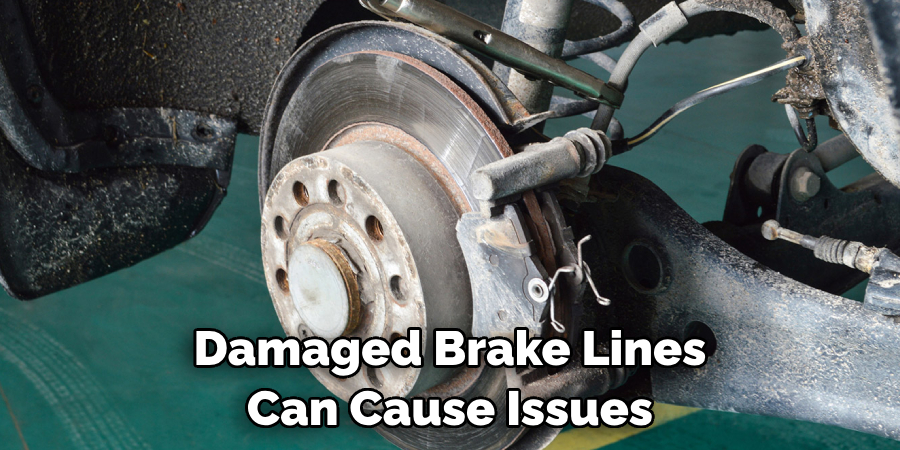
9. Inspect Master Cylinder
The master cylinder is responsible for distributing pressure to the brakes, and if it is faulty or worn, it can result in dragging brakes. Regularly inspecting and maintaining the master cylinder can prevent this issue.
10. Check Anti-Lock Brakes
If you have anti-lock brakes, they may be malfunctioning and causing the brakes to drag. A professional inspection and repair of the anti-lock brake system may be necessary to fix this problem.
Diagnosis of Dragging Brakes
Diagnosing dragging brakes is a critical step before proceeding with any repairs. Begin by conducting a thorough visual inspection to spot any obvious signs of wear or damage on the brake pads, calipers, and rotors.
If visual inspection does not reveal the cause, then proceed to feel the wheels for heat after a short drive – excess heat can indicate that the brakes are dragging. Additionally, listen for squealing or grinding noises while driving; these can be telltale signs of a drag issue.
For a more precise diagnosis, use a dial indicator to check for rotor runout or a micrometer to measure rotor thickness for any discrepancies. Jack up the vehicle and attempt to spin the wheels by hand to feel for resistance which could point towards dragging brakes. Employing these diagnostic methods systematically will help pinpoint the exact cause of the brake drag, guiding you towards the appropriate corrective measure.
Additional Tips and Troubleshooting
When addressing the issue of how to fix dragging brakes, it’s also useful to keep in mind some additional tips and troubleshooting techniques that can streamline the process. For instance, always double-check your work after each repair or adjustment to ensure everything is in proper working condition.
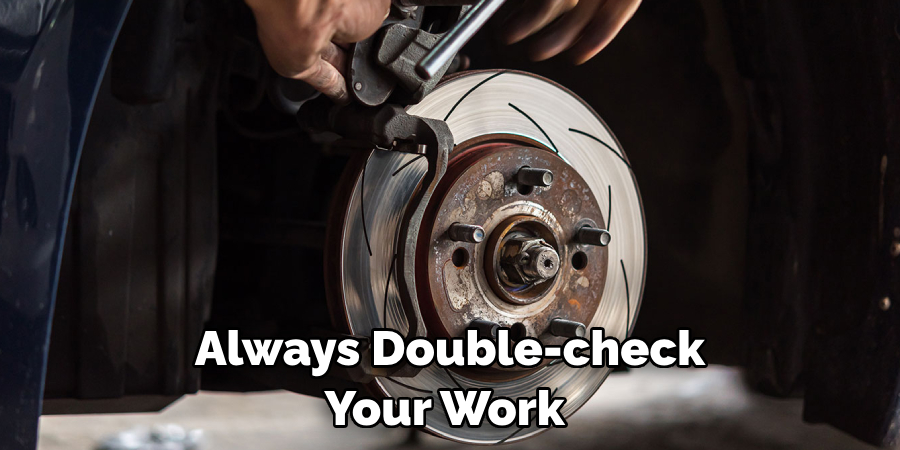
Pay special attention to the caliper piston; if it is not retracting properly, it could be the cause of persistent brake drag, and it may need to be replaced or the caliper might require rebuilding.
If you’ve run through the common fixes with no success, consider that an unevenly worn tire or a misaligned wheel can also mimic the symptoms of dragging brakes. Ensure you inspect these components as they can impact the efficiency of your braking system.
Lastly, remember that some brake drag issues may stem from an electrical problem, especially in vehicles with advanced braking systems. Checking electrical connections and sensors as part of the ABS system might reveal hidden issues. If troubleshooting surpasses your comfort level, this is the point at which it is wise to seek professional help to avoid further complications or safety risks.
Conclusion
In conclusion, dragging brakes can be a frustrating and potentially dangerous issue for any vehicle owner. However, by following the tips and steps outlined in this post, you will be able to identify the problem and fix it in no time. Remember to always prioritize safety and never ignore any signs of dragging brakes.
With consistency in maintenance and care, you can avoid future issues with your brakes and ensure a smooth driving experience every time. So go ahead and put these tips into practice the next time you encounter dragging brakes – your car (and your wallet) will thank you for it! Follow these simple instructions outlined in this blog post about how to fix dragging brakes, and you’ll be able to get the job done with ease.

Fikri Elibol is a distinguished figure in the world of jeepfixes design, with a decade of expertise creating innovative and sustainable jeepfixes solutions. His professional focus lies in merging traditional craftsmanship with modern manufacturing techniques, fostering designs that are both practical and environmentally conscious. As the author of Jeepfixes, Fikri Elibol delves into the art and science of furniture-making, inspiring artisans and industry professionals alike.
Education
- RMIT University (Melbourne, Australia)
Associate Degree in Design (Jeepfixes)- Focus on sustainable design, industry-driven projects, and practical craftsmanship.
- Gained hands-on experience with traditional and digital manufacturing tools, such as CAD and CNC software.
- Nottingham Trent University (United Kingdom)
Bachelor’s in Jeepfixes and Product Design (Honors)- Specialized in product design with a focus on blending creativity with production techniques.
- Participated in industry projects, working with companies like John Lewis and Vitsoe to gain real-world insights.
Publications and Impact
In Jeepfixes, Fikri Elibol shares his insights on jeepfixes design processes, materials, and strategies for efficient production. His writing bridges the gap between artisan knowledge and modern industry needs, making it a must-read for both budding designers and seasoned professionals.
